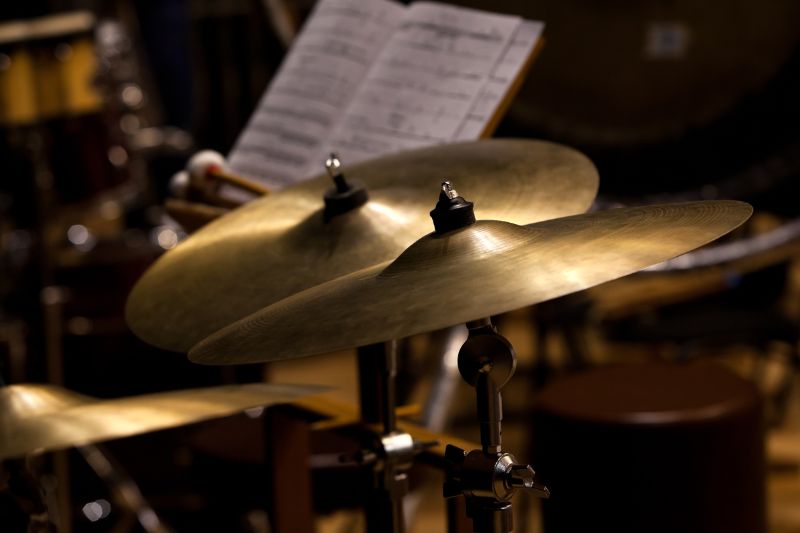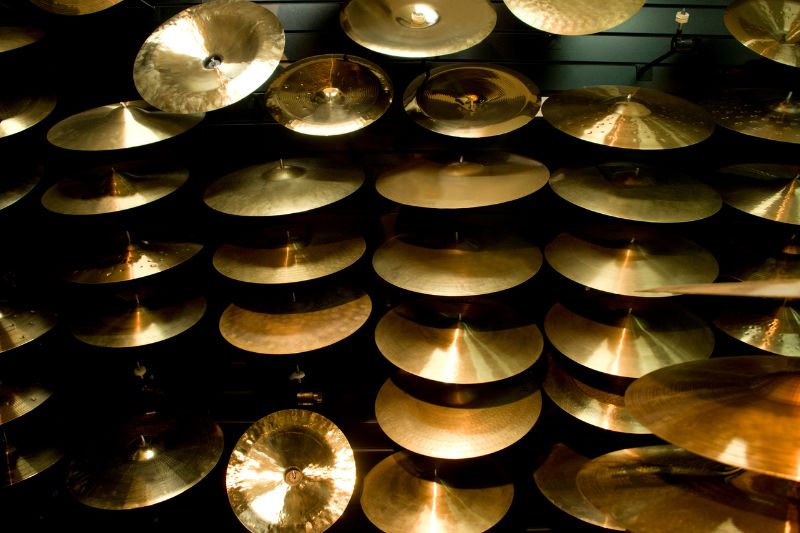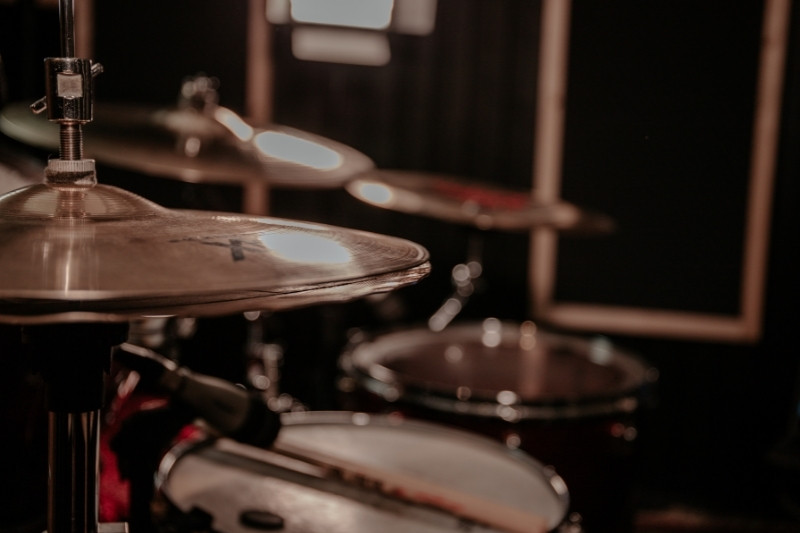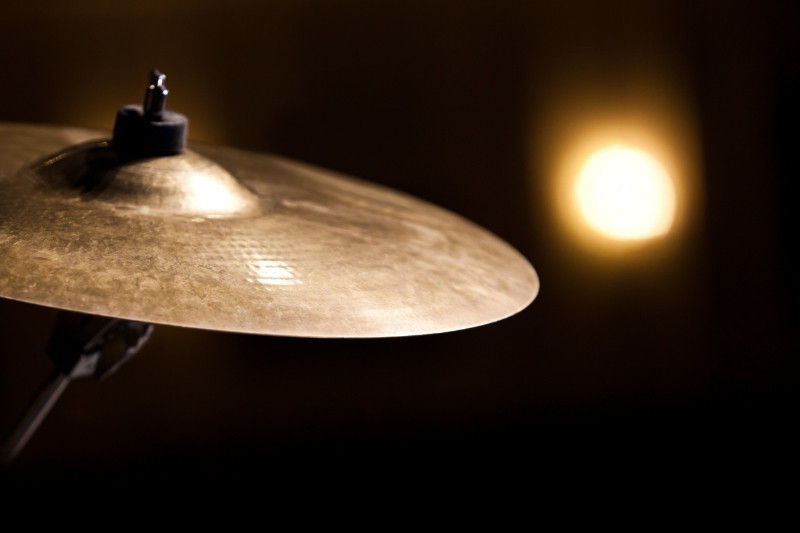How Cymbals Are Made – Different Alloys and Processes
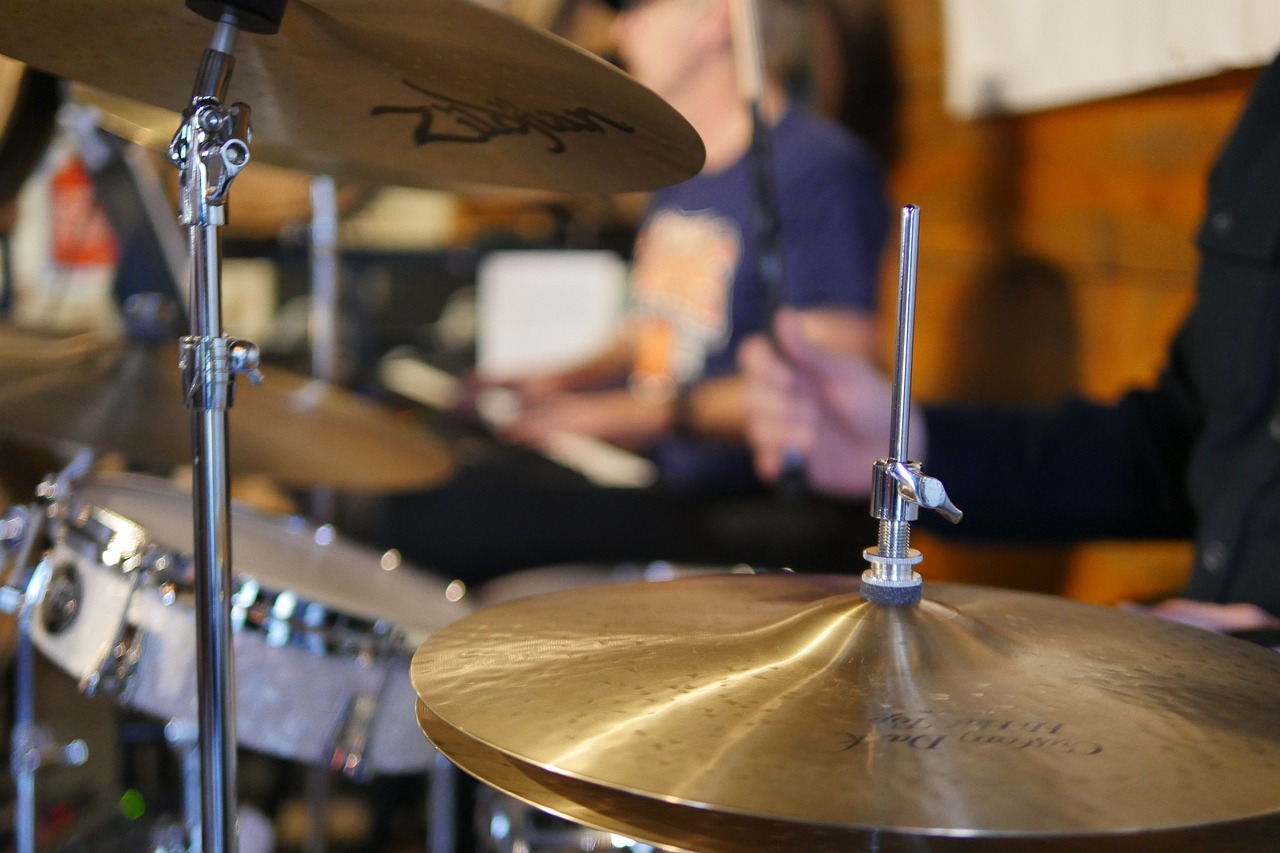
Making a cymbal is a time-consuming and complicated process, involving numerous stages and hours. Cymbals are great additions to any drum kit, giving it a wider range of sounds.
Cymbals are made out of metal. Since there are dozens of different metals and metal alloys, over the years people have figured out that bronze alloy is the best for cymbal production.
Bronze is one of the earliest alloys mankind has invented and it’s made out of copper and tin. Bronze is also used because it is relatively cheap and easily found, so it won’t drive production costs through the roof.
Before we get into it in more detail, check out this great Zildjian factory tour (one of the biggest cymbal brands in the world).
Contents
Cast vs. sheet metal
First of all, there are two ways in which cymbals are being made today. Cast metal cymbals are made by hand out of, you guessed it, cast metal. This technique gives you better sound quality and better control over the finished product, but at the same time, because it’s mainly done by hand, the cost of production is much higher.
This results in cast metal cymbals being better quality and better sounding, but also much more expensive as you need experienced qualified workers to get it done, so these are the cymbals usually used by the professionals only.
The sheet metal on the other hand is a much easier and cheaper way to produce cymbals, but it also affects the sound, but this time for the worse sadly.
The main difference is that the metal for cymbals is not cast in the factory of the cymbals manufacturer but is pre-rolled somewhere else. This means that the main ingredient is bought from other factories and comes in bulk to the manufacturers.
There, it’s simply cut into cymbal shape and finished off, which is all done by the machine, keeping the hours and manpower down, which brings the costs down.
Unfortunately, this also means that the quality is inevitably going to be lower than the cast cymbals, but it’s still good enough for beginners or intermediate players. Also, since they are much cheaper, they are much more affordable for beginners to buy.
B20
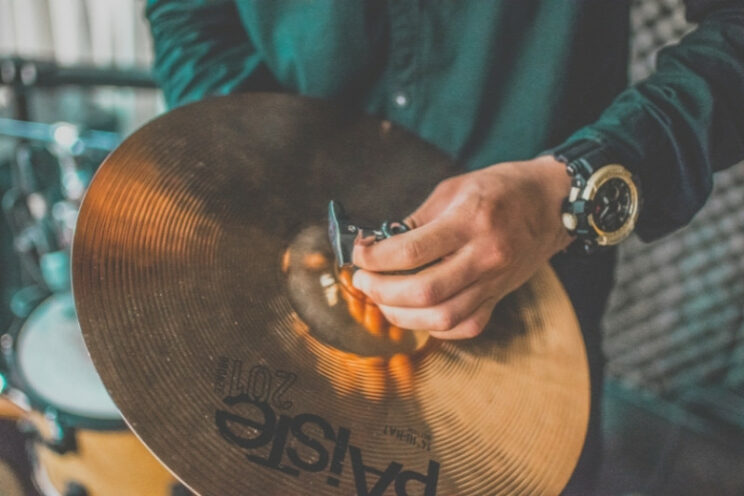
There are several different alloys that cymbal makers around the world use. The most standard one is the bronze mixture with 80 percent copper and 20 percent tin, also known as B20 (as you’re going to notice, all of these alloys are named B something – that number is simply a percent of tin in the alloy which makes it different to one another).
B20 is used by all manufacturers when it comes to casting cymbals. It’s also known as bell bronze. You can find many cymbals that are made with this material in Zildjian, Paiste, Sabian, Meinl, and so on.
This specific alloy has been known for many years and is used so often because it has a perfect sound dynamic and range, providing you with a rich and loud sound that cuts through the rest of the noise coming when playing music. But, B20 has the downside of not being malleable, meaning that you can’t use it for sheet metal production.
Since these cymbals are all-rounders, you can find them anywhere from jazz bands to heavy metal bands.
B8
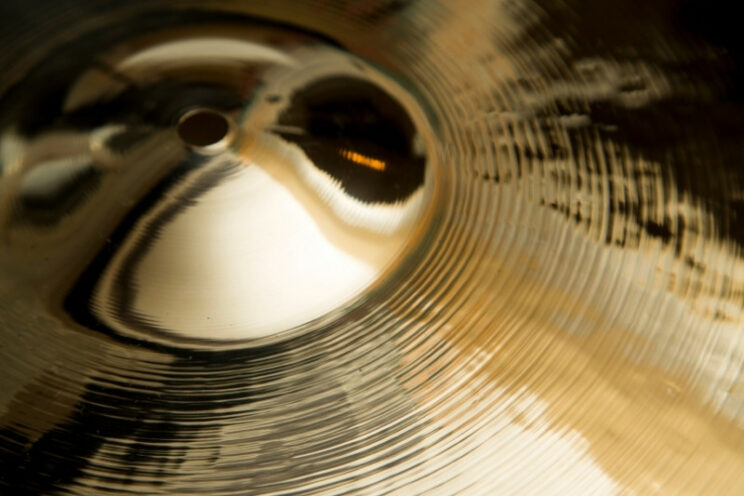
B8 is a bronze alloy consisting of 8% tin and 92% copper. This is the second most used alloy, which was developed in the 20th century, mostly for economic reasons. This alloy uses less tin (keeping production costs low) and can be spread into sheets and used for cymbal production that way.
Paiste notably tried in every way to produce high-end products from this type of alloy, mainly in an attempt to move their production entirely to the B8 compound from B20, allowing them to keep the costs down. But despite the effort, they could never reach the high-end quality that B20 alloy could produce.
Nevertheless, all of the big manufacturers use this type of alloy for their lower-end products, which are meant for beginners and intermediate players. You should note that these cymbals have a bit different sound, with higher tones and sharper sound being produced. This is great for punk and rock bands, as it suits better their needs.
As for the different models you can find them in Meinl (Custom, Lightning, Amun series…), Sabian (B8, Pro, Pro Sonix, APX), and Zildjian (ZBT, ZHT, ZXT). Paiste refers to this alloy as the 2002 series and is the only manufacturer to produce the high-end cymbals that are being used by professional drummers from this alloy.
Various B alloys
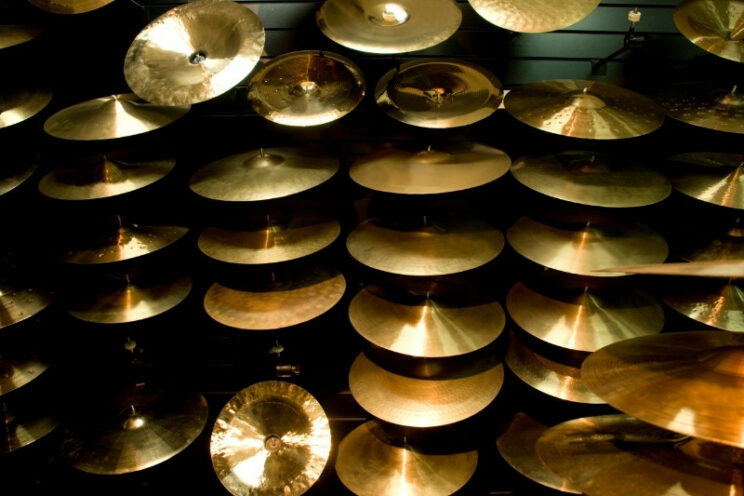
Apart from B8 and B20, various manufacturers use different types of other alloys for some cymbals in trying to get something new and fresh on the market.
Meinl is famous for marketing the fact that they are the only manufacturer to have four different alloys from which they make the cymbals. Apart from B20 and B8, they also use B10 and B12 (with 10% and 12% of tin, respectively). Paiste is also known to have its own 15% tin alloy, called B15.
All of these alloys didn’t however spark a revolution in cymbal making but have remained a novelty, used by professionals to get some special sounds they need at that moment.
Brass and silver nickel
Brass is a mixture of zinc and copper, usually, 38% zinc and the rest is copper. Brass is commonly used for gongs and similar Asian percussions, but it can also be used for cymbals.
Brass cymbals however are very low quality and can only be used as beginner cymbals or for kids’ toys. They are on the other side very, very cheap to make and sell, but if you’re ever going to go to anything more serious than playing the basics, you’ll need some other cymbals.
Silver nickel is a compound of nickel and copper, with usually 12% nickel inside. Once upon a time, in the ’40s and 50’s almost all cymbals were being made from this alloy, but it fell out in the 60’s when louder and sharper B20 took its place, especially with the rise of electric music.
They are still produced today, but rarely, and have that beautiful silver look in contrast to the standard goldish color of today’s cymbals.
Process of crafting cymbals
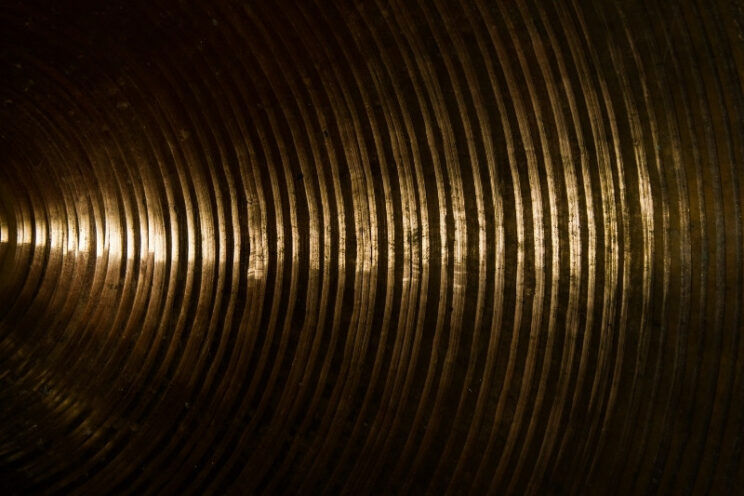
The whole process behind the fine craftsmanship of cymbals is divided into three steps. It starts with casting, crafting the shape, and finishing.
Casting
Casting revolves around melting the metal and pouring it into a mold. This process is followed by cooling the metal, then reheating it again and putting it back to further the process which is pressing the metal for the particular thickness of it.
After the necessary steps have been made, follow the creation of the bell. This is done by a machine that dents the cymbal right at the center and creates the bell. After all this, the product is cut to a certain shape without the edges to better resemble a cymbal.
Shaping (hammering)
Probably the most accurate process there is – hammering. Nowadays this process is done by a machine, or a person operating a machine instead of handcrafting. It’s certainly easier and more accurate than in the old days.
The process of hammering is to get the desired shape of the product and the particular design of a cymbal. The way it would look, the thickness, and the shape, all take place further into this process.
Finishing
The finishing process has a few things, starting with further shaping the cymbal with a rotary tool. This is done for better finishing the cymbal and polishing it afterward to get the surface and edges right.
Polishing is done afterward to get the product to its final stage which would be printing. This is where certain manufacturers carve their logo onto the cymbal and therefore the product is ready for the market.
Fun little fact, this process can take up to a month. While the regular timeframe is around 20 days.
What is the best material for a Cymbal?
The most common cymbal materials you’ll encounter are B20 and B8. B20 cymbals are 80% copper and 20% tin. They are the best all-rounders which produce loud and rich sounds that easily cuts through the mix. B8 cymbals, on the other hand, are 8% tin and 92% copper. They produce a high and sharp sound.
What is the difference between Brass and Bronze Cymbal?
Brass cymbals are typically more fragile and low-volume to transport to a gig or studio, whereas bronze cymbals are excellent for both settings. That being said, you can’t knock brass cymbals just yet as they are still a viable option and a more affordable one as well.
Why are Cymbals so Expensive?
It’s only natural that quality costs money. The cymbal-making process is one that takes time and skill, as well as costly materials (depending on the alloy/manufacturer). However, not all cymbals are expensive and you have lots of quality options on the market that are considered budget-friendly.
Conclusion
Cymbal-making is a very complicated process that takes a lot of steps and time to get right. It is also linked with the craftsmanship that existed in the past and was automated over time, making a high level of accuracy possible.
The whole process revolves around getting a particular shape and design, with a special focus on hammering which gives it all this unique sound each cymbal has.
Knowing different compounds, ways of manufacturing, and how that affects the sound, it will be easier for you to pick the right product for you and your playing style, depending on the budget you have available. But ultimately, you should always go and test the cymbals you’re looking for, to see in person if that sound is the right one for you.

